Epoxy Resin Safety: 6 Tips for Safe Working with Epoxy Resins
Working with epoxy resin is a fantastic hobby and can be a creative side hustle. I mean, who doesn’t love getting in tune with their creative artsy side!? You can make all sorts of items like coasters, jewelry, keyrings, and many others. Take a look at our Ultimate Beginner Introduction to learn more about resin art and what you can make from it.
You came to this page for a reason. You’ve probably heard a lot of different information about epoxy resin safety. Maybe you don’t even know that you need PPE or that there are safety precautions to follow. We get it; we were once just starting out too. Look no further!
We will outline what epoxy resin equipment you need and what safety precautions to follow. Keep reading to find out six tips for safely using epoxy resin.
How Safe Is Epoxy Resin?
We get this question a lot, “is resin dangerous?”. Epoxy resin can be dangerous to work with and can cause serious health risks. That is why you need to be well equipped and informed of the safety precautions.
Epoxy resin is a combination of two primary parts: the resin and the curing agent. Once these two agents combine, a chemical reaction occurs. Properly cured epoxy is not toxic.
Exposure to agents (usually the hardener agent) prior to and during the curing process is what can cause poisoning and serious health problems. This is generally through two ways:
- Toxic fumes: Excessive inhalation of epoxy vapors can cause nose, eye, and throat irritation. It can even lead to asthma and other lung issues.
- Direct contact: Direct contact with epoxy agents can lead to skin allergies and irritation such as redness, swelling, and itching.
If you experience any severe side effects while using epoxy resin (such as headaches, dizziness, slurred speech, breathing problems, or skin irritations),
Please Seek Immediate Medical Assistance!
Alright, so let’s have a look at 6 epoxy resin safety tips to prevent any of the above side effects from occurring:
Read the Safety Data Sheet for Your Resin
Why is it important to familiarize yourself with the types of epoxy resin and their SDS? It’s crucial because the epoxy resin can differ depending on the kind or category it falls under and the company you purchase from. This can mean that the resin mixing ratio, hazardous properties, handling, and safety precautions can differ.
It’s essential to know the type of resin you are working with in case something goes wrong (obviously hoping nothing goes wrong, but rather be safe than sorry!).
Look at this example of resin SDS and hardener SDS from Entropy Resins in the US. These are good examples of what should be on the SDS.
Every epoxy resin should come with an SDS sheet. If there isn’t one, ask the supplier for it. If they don’t have one, choose a different supplier.
The tip above is the most important. The following safety tips depend on the SDS. We have outlined general safety tips you should be considering when working with epoxy resin.
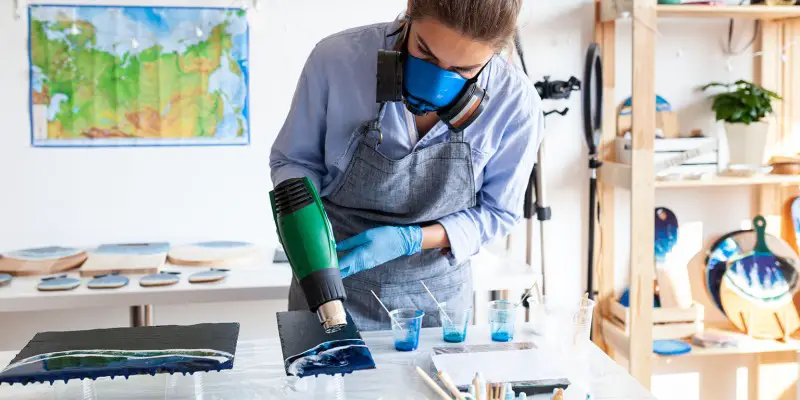
Wear The Correct Personal Protective Equipment (PPE)
PPE is essential when working with epoxy resin. However, you may hear that some resins are safe to use without wearing PPE. While this may be the case, our advice is to contact the resin provider and seek their guidance on safety-specific information on their product.
If you are still unsure or feel a bit uneasy – stay on the safe side and be well equipped and protected.
Here are five types of PPE you should wear while working with resin:
Respirator Mask
Using a respiratory mask will protect you from inhaling chemical fumes. We suggest wearing your respiratory mask even BEFORE you start mixing. As the separate agents may be a danger if inhaled. Your respiratory mask should remain on when combining the resin and the hardener.
Please note: Some fumes may be odorless but can still cause damage to your lungs.
A simple cloth mask or an N95 mask will not always filter out the toxic fumes (again, depending on the resin type – always check the SDS). Your safest option is an organic vapor or particulate respirator like the one below:
3M 6300 Half-Facepiece Respirator
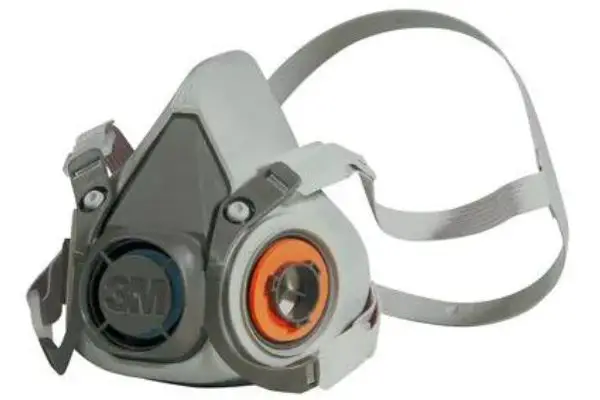
*Paid Links
3M 6800 Full-Facepiece Respirator
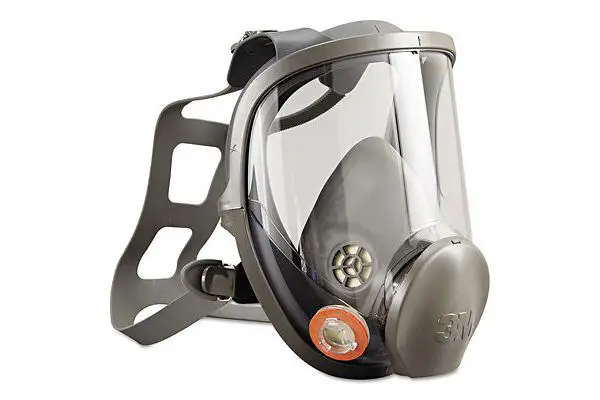
*Paid Links
The 3M Half Facepiece Reusable Respirator 6300 (Paid Link) is soft, durable, reusable, and reduces exposure to various vapors and toxins. It’s also important to note that the filters/cartilages will probably need to be bought separately.
They should also be changed regularly (period of use advised by the provider).
This type of respirator can be bought as a “half face,” where it just protects the bottom part of your face. 3M 6800 Full Facepiece Reusable Respirator (Paid Link) provides eye protection as well.
3M P100 Respirator Cartridge/Filters
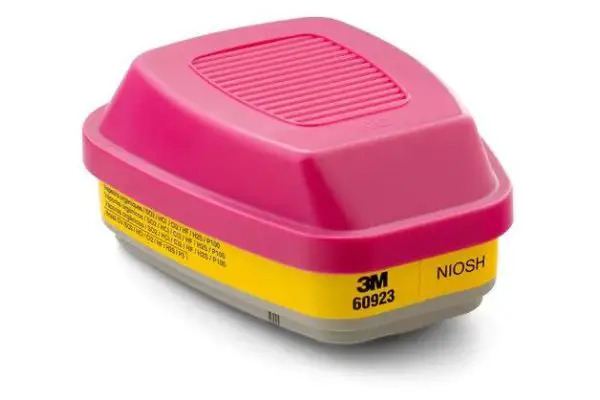
To go with your respirator you will need some cartridges that will filter out the fumes from the epoxy resin.
*Paid Links
Safety Goggles
Safety goggles are not applicable if you have a full-face respirator mask. They are applicable if you do not have eye protection. Eye protection is essential as the fumes could still irritate your eyes. Safety goggles should be worn while sanding completed resin products.
NEIKO Clear Safety Goggles
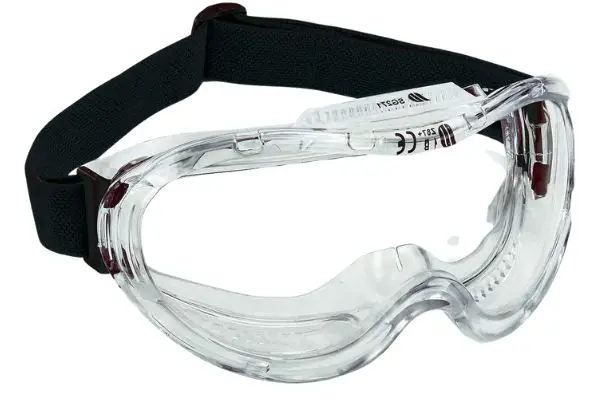
*Paid Links
Gloves
Which gloves are the best for epoxy resin? Nitrile gloves are best suited for epoxy resin.
Nitrile gloves offer the best protection as they are chemical resistant. This means they can withstand chemical attacks for a short time. We suggest buying in bulk and disposing of each pair after resin epoxy use.
We do not recommend latex gloves as they tend to tear easily, offer less chemical protection, and can cause skin allergies and reactions. Vinyl gloves are better than latex but they do not provide as much resistance when compared to Nitrile gloves.
Med PRIDE Nitrile-Vinyl Gloves
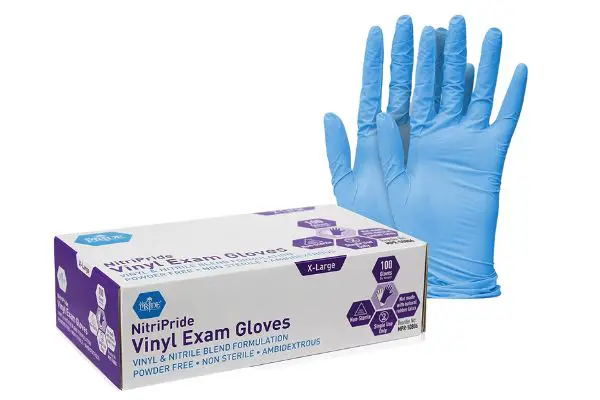
*Paid Links
Apron
Avoid ruining your clothes and wear an apron. It’s not mandatory, but we can promise that you will mess resin on yourself even if you try your best not to! (It just happens). Plastic aprons should be disposed of after every epoxy resin session. This is not the best for the environment and can be quite costly.
Another option is to invest in a chemical-resistant polyvinyl chloride (PVC) apron (Paid Link) which can be reused. The initial cost will be more expensive. However, in the long run, it will be more cost-efficient when compared to buying disposable aprons.
PVC Vinyl Apron
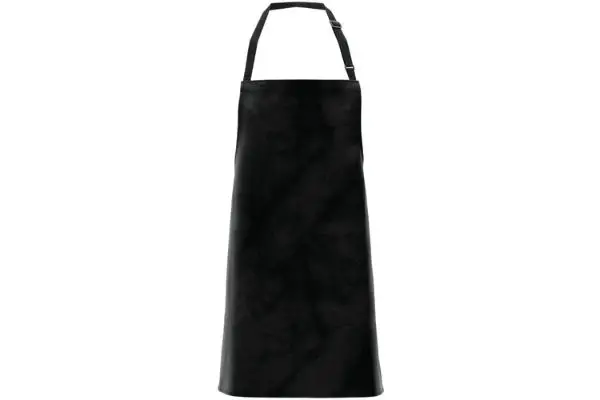
*Paid Links
Plastic Disposable Aprons
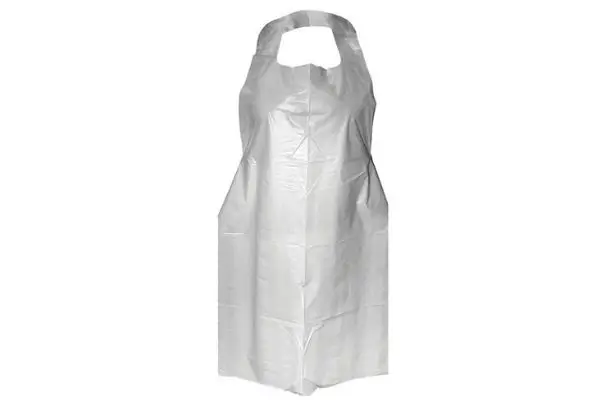
*Paid Links
Clothing
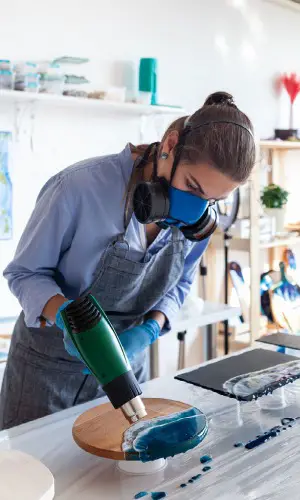
We suggest wearing clothing that you won’t mind getting resin on. The resin will not always come out of your clothing. In addition, if you make a mess on yourself, it could seep through the clothing and onto your skin. So wear thick old clothes that you’d be okay with disposing of.
Having a thicker barrier between your skin and resin will be better. Wearing long sleeves is also essential to protect your skin from resin. Tuck your sleeves into your gloves so that no skin is exposed to epoxy resin. It’s also a good idea to wear long pants – just in case!
Keep Your Workspace Organized
Your resin epoxy workspace should be well-organized, easily accessible, and have enough space to move around. The last thing you want is to be cramped up and make the mistake of spilling resin anywhere and everywhere (yikes! Not fun).
Have a workspace that is dedicated to just working with resin. You don’t want to move around from one house area to another. This is inconvenient and increases the possibility of messing resin on things.
The best working space would be an area where:
- There are limited distractions (no pets or children should be in the same area!)
- Preferably have a door that can lock if you have small children
- There is enough space for you to move around and store products
- It is well organized
- The materials and tools are easily accessible
- There is enough light
- It has at least one window and is well vented
Avoid using an area often accessed or used by people in the home like a kitchen (BIG no as this is where you prepare food too) or the bedroom (imagine breathing in all those vapors while you sleep, no thank you!).
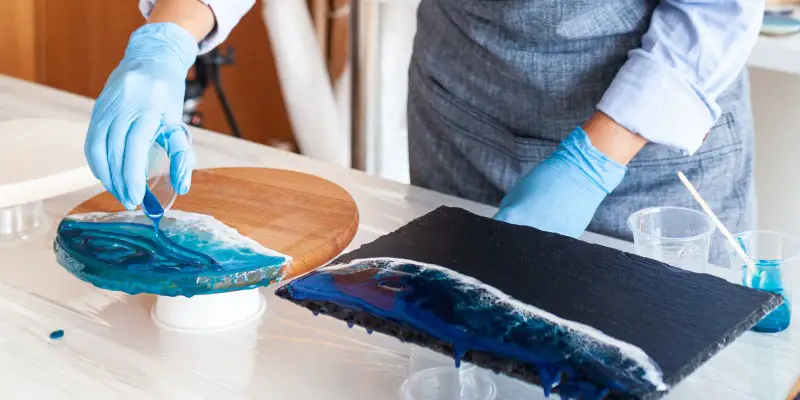
Well-Ventilated Workspace
We already know that overexposure to epoxy resin fumes can cause health problems. Therefore we want the fumes to move away from us while working. Proper epoxy resin ventilation ensures plenty of airflow to avoid being exposed to the resin fumes for too long.
Open a Window
As suggested earlier – have at least one open window. You want as much airflow as possible to allow the harmful fumes from the epoxy resin to exit the area and have fresh air come in. If you can keep your room door open, do so. If you have small children or pets who just love seeing what you are up to, keep it shut.
Use a Fan
Another way to circulate air is by using a stand fan (Paid Link). One option is directing the fan at your face so that the air is blowing on your face. Another option is to place the fan behind you so that the air is blown away from you. If you have a ceiling fan – this also works well for air circulation.
Don’t Use Your Aircon
Rather avoid using air conditioning as the fumes may get caught up in the system and still linger around the room. Many AC units simply recirculate the air around the room, they don’t bring in any fresh air meaning that the fumes from the resin will just build up in your workspace.
Dedicated Tools For Resin Art
We advise having dedicated tools just for epoxy resin. This also avoids food contamination. Mark your resin tools, such as knives, scissors, trays, cups, etc., for ONLY resin epoxy use.
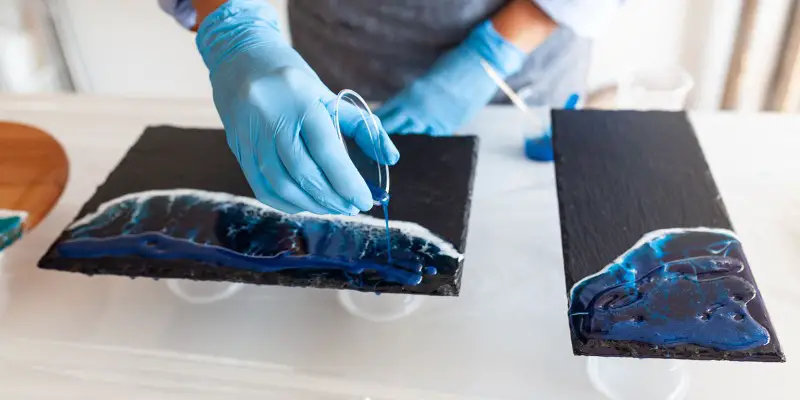
For example, let’s say you use muffin trays as coaster molds. DO NOT use the same muffin tray for muffins.
Another example is if you use a pair of kitchen scissors to trim your resin product or to open an item for your resin product, there is the risk that either of the agents messes your scissors (yes, resin can get a bit messy at times).
This is fine but imagine the danger if you don’t realize that a resin agent is on the scissors? Then you use the scissors to cut open a food product? You want to avoid this.
Prepare Your Workspace in Advance
Once the agents are combined, you will have a window period of approximately 30 minutes before it begins to harden. Time should not be wasted scavenging around for tools and materials. Be prepared!
Plan out exactly which materials, such as colors, glitters, sequences, etc., you will be using and place them close to you. For example, if you are creating a beach-themed coaster. Have the sand ready and lay out the shells before mixing.
You can even go as far as placing it in the mold in preparation for pouring. Resin tools you will be using should also be placed nearby and easily accessible.
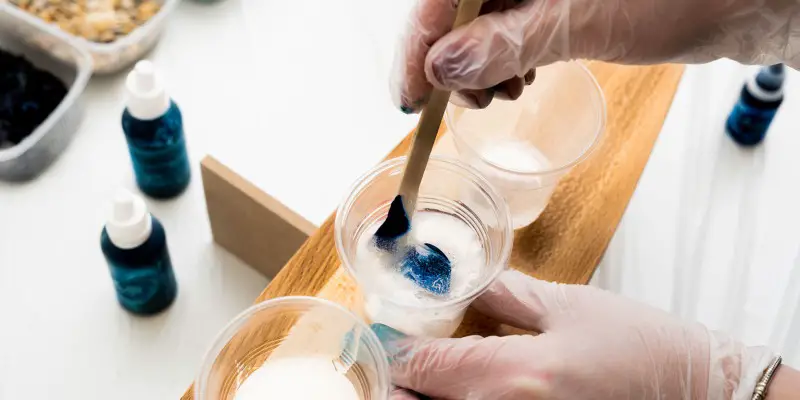
Let your family know that you should not be disturbed (only for emergencies) for a specific amount of time while you pour. Being interrupted right in the middle of pouring is not ideal! Especially when it’s prime time for concentration! As mentioned before, ensure no pets or small children can enter your workspace as this can endanger them.
Resin Safety FAQs
What safety equipment should I use when working with resin?
You need to wear appropriate gloves, eye protection, and a respirator that is rated for use with resin at a minimum. You should also be working in an environment with good ventilation.
Is UV Resin Safe to Use?
Uncured UV resin is toxic to humans, animals, and the environment. You should wear appropriate protective equipment and follow safety precautions when working with UV resin.
Once UV resin is cured, it is no longer toxic. For more information have a look at the difference between Epoxy and UV resin.
How Do I Get Epoxy Resin Off my Hands and Skin?
When working with epoxy resin, you need to be careful that it doesn’t get on your hands and skin. Even though we try our best, it can happen. We recommend two easy ways to remove resin from your hands and skin in this article.
I can only practice resin in my bedroom, now what?
Have a look at the SDS of your supplier. Investigate how dangerous it is to be around the fumes and for what period of time. If it’s too dangerous, find another supplier where the fumes are not so toxic and wear PPE!
Setting aside a specific corner/area in your room where you can work is a good idea. Ensure you have proper ventilation throughout the mixing and curing process. That means windows should be wide open, and fans should be on. Once you have completed your product, spend time outside of your bedroom.
One alternative is to find a space outside if the weather is appropriate (depending on where you are based). A garage will also do.
Another alternative is hiring out a creative space near where you live.
How do I clean my resin cups?
Resin cups can either be cleaned when they are dry or wet. We outline each procedure here.
The Bottom Line
We hope you wear PPE and follow the safety precautions when working with epoxy resin. Remember to always check the SDS!
Check out some of our epoxy resin tutorials. Let us know what you think in the comment section below!

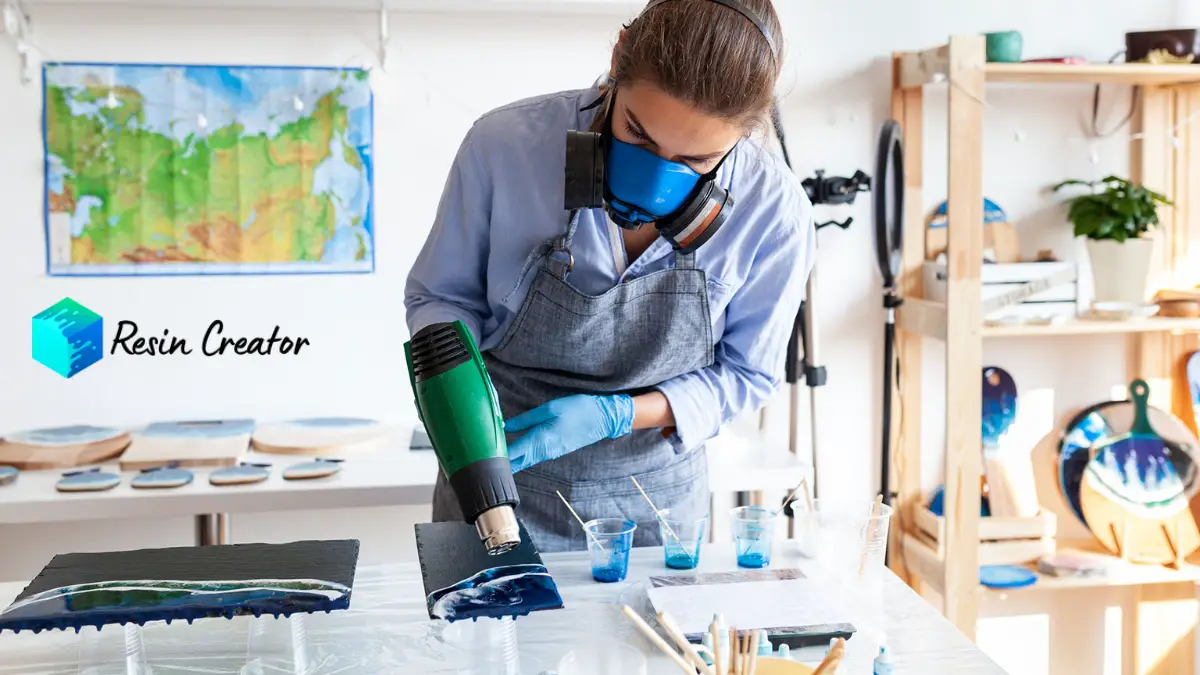


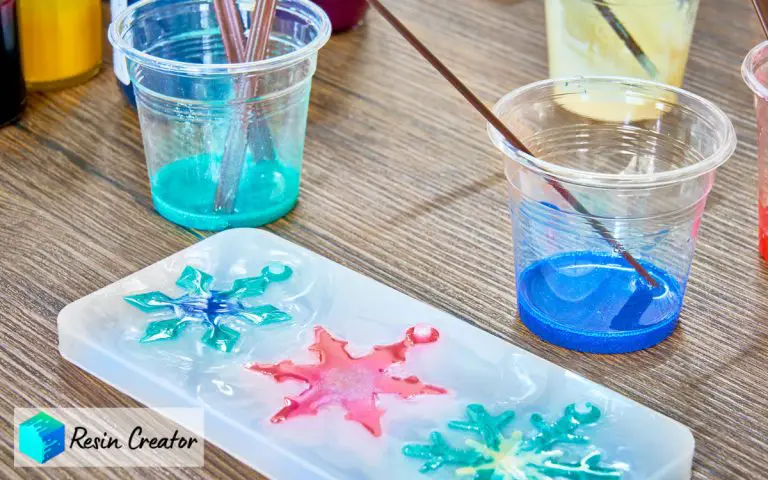


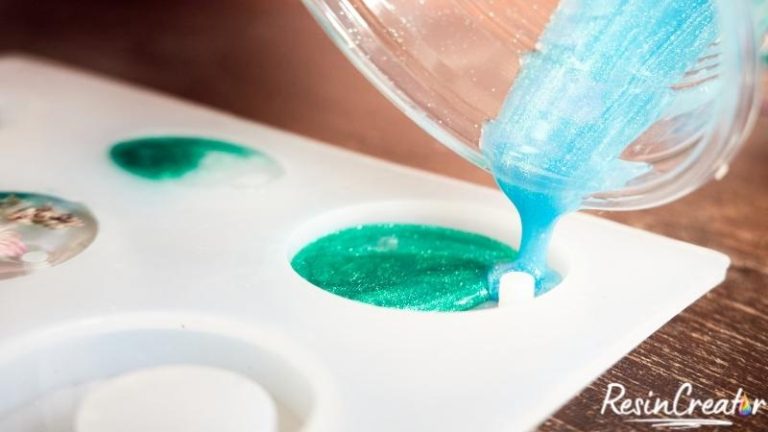

Thanks for your blog, nice to read. Do not stop.